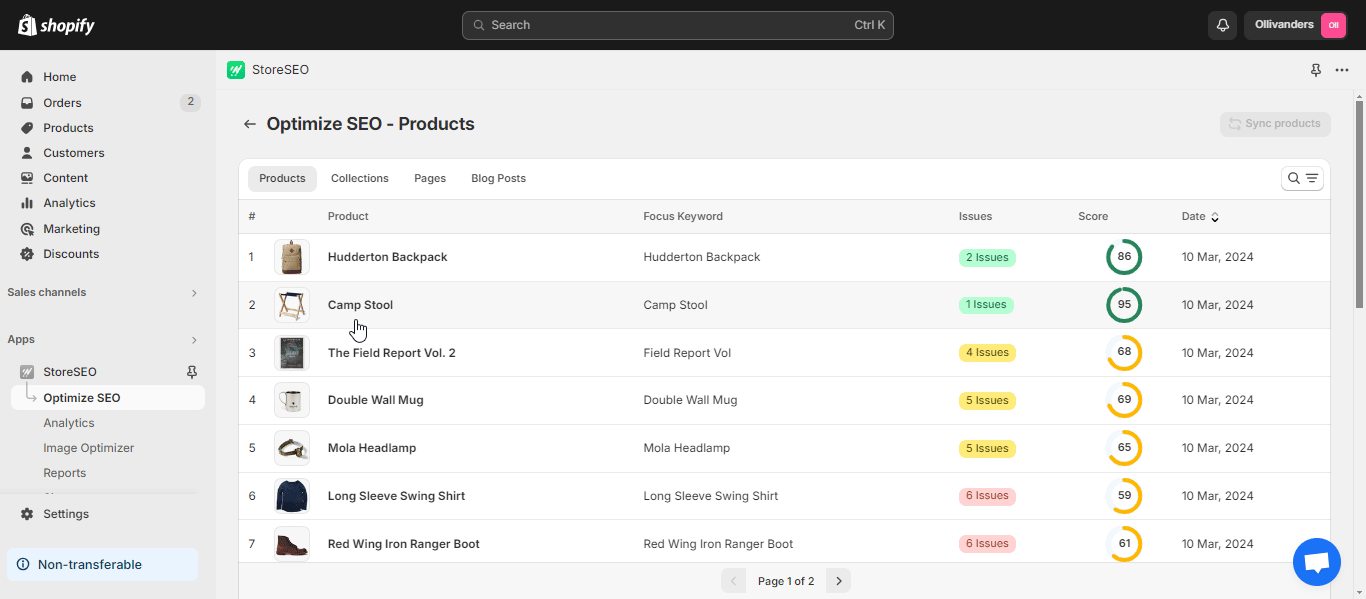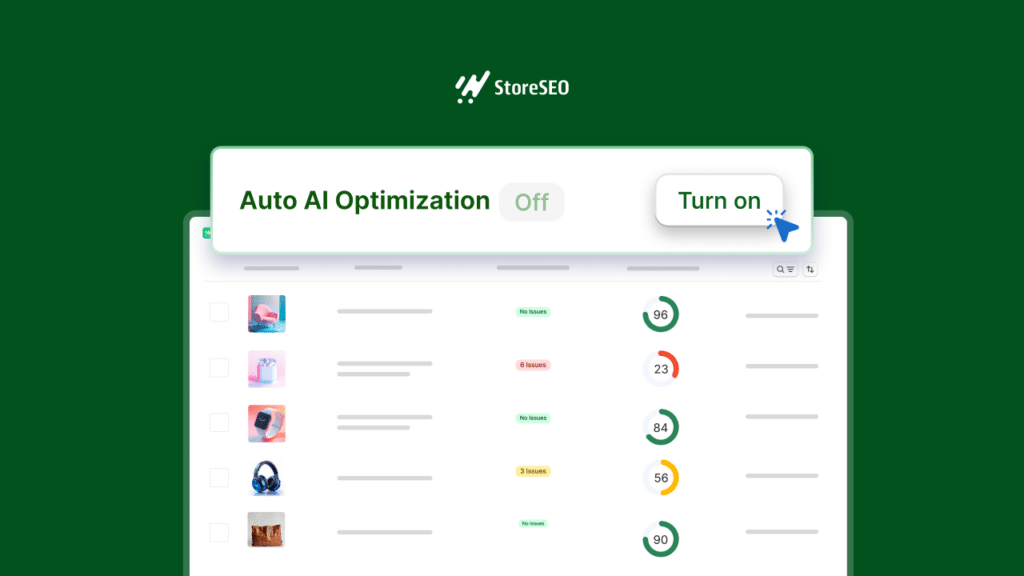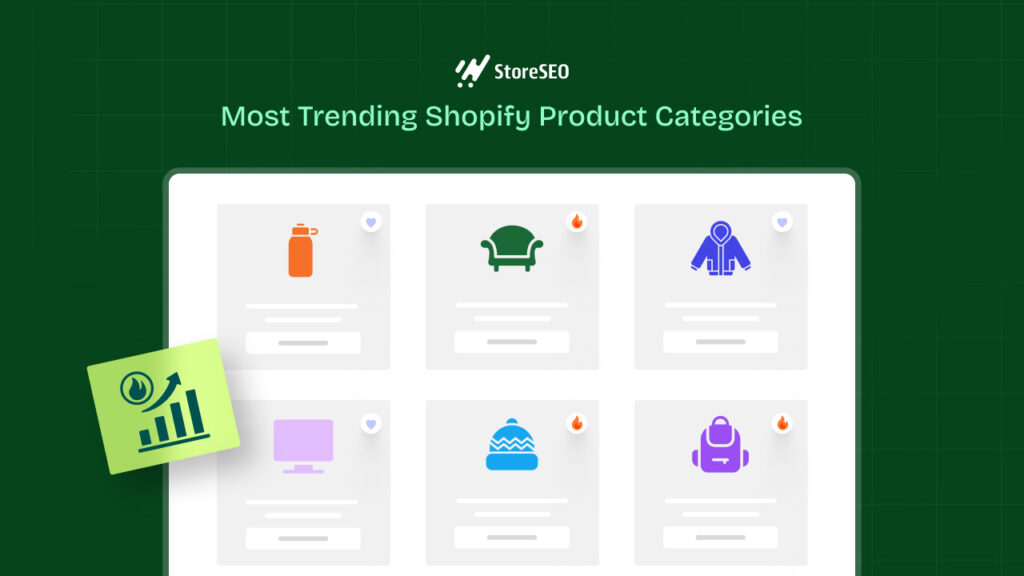The significance of SEO-friendly URLs for Shopify stores cannot be overlooked where competition is just a click away. These minor components of your website hold huge power and serve as a critical bridge between your content and potential customers. But how to create and change SEO friendly URLs for Shopify and what exactly makes a URL SEO-friendly? It is about creating a seamless experience that guides users right to your Shopify store. In this blog post, we will explore how you can optimize your Shopify store’s URLs for better performance.

The Structure of Shopify URLs
When you are setting up your online store with Shopify, understanding how your URLs are structured can help you manage your site better. By default, Shopify URLs have a predictable pattern. For example, product pages typically look something like:

“yourstore.com/products/your-product-name”
Similarly, collections of products appear as “yourstore.com/collections/your-collection-name”. This structure is quite straightforward and helps keep things organized right from the start.
Importance of Consistency in URL Structure for User Navigation and SEO
Maintaining a consistent URL structure is crucial not just for SEO but also for enhancing user navigation. Consistent URLs create a predictable environment for your visitors, making it easier for them to understand how to navigate your site and what to expect when they click on a link.
From an SEO perspective, a logical and consistent URL structure allows search engines to crawl your site more effectively and understand the relationship between various pages. This can help improve your site’s indexing and ranking in search results. So, keeping your URLs organized and logical is a win-win for both your users and your SEO efforts!
Creating SEO-Friendly URLs in Shopify
Having SEO-friendly URLs in Shopify is a crucial step for enhancing your store’s visibility and improving its search engine rankings. Let us break down how you can achieve this through a step-by-step guide, best practices for URL naming, and tips to avoid common pitfalls.
Changing and Creating SEO-Friendly URLs in Shopify
When you are setting up new pages on your Shopify store, it is important to ensure that your URLs are optimized for search engines. Here is how you can do it:
Best Practices for URL Naming Conventions
To make the most out of your URLs, follow these best practices:
- Use Keywords: Include relevant keywords in your URLs to help improve your page’s SEO. For example, if you are selling vintage lamps, your URL could be something like “www.yourshop.com/vintage-lamps.”
- Use Hyphens to Separate Words: Instead of underscores or spaces, use hyphens to separate words in your URL. This makes it easier for search engines to read and understand them.
- Keep it Lowercase: Always use lowercase letters in your URLs to avoid confusion, as URLs are case-sensitive.
How to Avoid Common Mistakes When Creating URLs
To create and change SEO friendly URLs for Shopify, it is easy to make mistakes that could hurt your SEO. Here are some tips to avoid them:
- Avoid Using Lengthy URLs: Keep your URLs concise. Long URLs are difficult for search engines to process and might not fully appear in search results.
- Steer Clear of Special Characters: Special characters and symbols can break your URL and make it less accessible to both users and search engines.
- Do not Stuff Keywords: While keywords are important, overusing them can make your URL look spammy. Use them judiciously.
Advanced Tips for SEO-Friendly URLs
To create and change SEO friendly URLs for Shopify is crucial for enhancing your website’s visibility and user experience. Here are some advanced tips and strategies to optimize your URLs, especially if you are using platforms like Shopify.
Apps & Third-Party Tools to Create and Change SEO Friendly URLs for Shopify
Shopify’s default URL structure is generally SEO-friendly, but there might be scenarios where you need to create and change SEO friendly URLs for Shopify and make it further to suit your specific SEO goals. For instance, if you are aiming to target specific keywords or match URLs with user search intent more closely, you might consider customizing your URLs beyond the basic ‘/products/’ or ‘/collections/’ paths.
Shopify offers a variety of apps that can help you optimize your URLs for better SEO performance. Apps like StoreSEO can smoothen up the whole procedure and make the total workflow easier along with metafield edits as well. To customize URLs in Shopify, you can use the StoreSEO app. Make sure you have installed and activated the app before accessing it. Here is the step-by-step guide to it:
Step 1: Access to StoreSEO App
Let us walk through how you can access and edit these previews to make your store more appealing. Go to StoreSEO, and click on, ‘Optimize SEO’

Step 2: Select the Product
Now choose the product you want to edit the search engine listing for, and click on the product itself and you will be taken to the optimization section.

Step 3: Edit the details
Now, you will see the fields to edit your product URL along with other metafields too. Go through them one by one and edit them accordingly.

Step 4: Check the Final Preview
Once you are done with the URL changing, scroll down and check the preview of all the information provided for preview.

That is how easily you can edit and see the real-time preview of your search engine listing on StoreSEO for your Shopify store.
Strategies for Maintaining SEO-Friendly URLs During Platform Migration
Migrating to a new platform can be challenging, especially when it comes to preserving your SEO efforts. To maintain SEO-friendly URLs during a platform migration, it is crucial to implement 301 redirects from old URLs to new ones. This helps preserve search engine rankings by informing search engines about the new location of your content.
Another strategy is to maintain a consistent URL structure as much as possible. If your previous platform used a specific URL pattern that contributed to your SEO success, try to replicate that structure in your new platform. This consistency helps reduce the SEO impact of the migration and provides a seamless user experience.
Check The Store Performance Using Tools & Methods
Alright, when you have successfully optimized your URL, it is time to check the performance. When it comes to keeping tabs on how your URLs are doing in the SEO game, there are a bunch of tools and methods that can give you the edge. First off, Google Search Console is your go-to. It is like having a health monitor for your website. It shows you how your URLs perform in search results, tracking metrics like clicks, impressions, and average position. Another powerhouse tool is Google Analytics, which dives deeper into how users interact with your site after clicking on a URL.
For those who want to get even more granular, tools like SEMrush and Ahrefs are like having a high-powered microscope for SEO. They not only track URL performance but also help you spy on competitors and see where you can improve. These tools offer detailed reports on keyword rankings, backlink profiles, and much more, giving you a comprehensive view of your SEO landscape.
How to Interpret Data from Google Search Console and Other Analytics Tools
Interpreting data from Google Search Console and other analytics tools can seem daunting, but it is all about knowing what to look for. In Google Search Console, focus on the ‘Performance’ tab. Here, you will see how often your site appears in Google searches (impressions), how many clicks it gets, and your average search position. These metrics tell you a lot about your visibility and attractiveness in search results.
With Google Analytics, you can dive into user behavior post-click. Look at metrics like bounce rate, pages per session, and average session duration to gauge user engagement. This data helps you understand not just how users find your site, but what they do once they get there.
For a broader perspective, SEMrush and Ahrefs provide insights into how your URLs stack up against competitors. They can show you which keywords are driving traffic to your competitors and what backlinks are boosting their SEO efforts. This kind of competitive analysis is invaluable for refining your SEO strategy.
Limitations of Shopify’s URL Structure for SEO
Shopify’s URL structure is neat and tidy, but it has some limitations, especially regarding search engine optimization (SEO). One of the main issues is the fixed URL paths, like /products/ and /collections/, which are mandatory. This can be a bit restrictive because you can not customize these segments to potentially include more SEO-friendly keywords or match the URL exactly to your page content. Also, Shopify does not allow the removal of these path elements, which might not always align with the best SEO practices where simpler and more direct URLs are often preferred.
Make Adjustments to Your URL Strategy Based on Performance Data
Knowing when and how to tweak your URL strategy is crucial for staying on top of your SEO game. If you notice a drop in clicks or a lower position in search results, it might be time to make some changes. Start by reassessing your keywords. Are they still relevant and competitive? Tools like Google Search Console and SEMrush can help you identify which keywords are underperforming.
Another key adjustment is improving your URLs themselves. Make sure they are concise, include relevant keywords, and accurately describe the page content. Sometimes, even small changes, like adjusting a URL slug to better match search queries, can make a big difference in how easily users can find your content.
Lastly, don’t forget about the technical side. Ensure your URLs are correctly redirected if you make changes, especially during a site migration or overhaul. Proper redirection preserves your SEO juice and keeps users landing on the right pages. Hope you have understood the concept of how to create and change the SEO-friendly URLs for Shopify.
So, have you found our blog useful? If you do, please subscribe to our blog for more tips, tutorials, and updates on industry-related topics.



![Featured Image - StoreSEO Brings Multilingual SEO for Shopify [With Full App Tutorial for Users] - Blog](https://storeseo.com/wp-content/uploads/2025/02/1-StoreSEO-Multilingual-SEO-Blog-1-1024x576.jpg)




